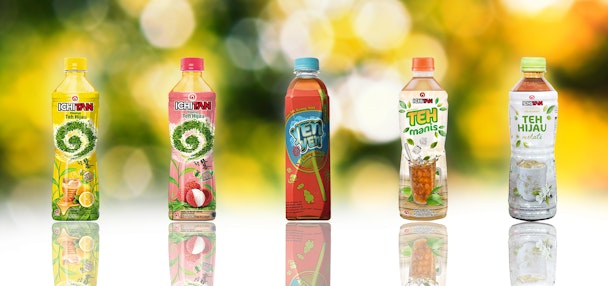Where are the Southeast Asian brands?
Southeast Asia’s biggest brands are preparing to make their presence felt globally. Shiv Moulee, strategic consultant, Kantar, identifies some of the names to watch out for.

Ichitan is a big brand in Thailand
The latest BrandZ Top 100 Most Valuable Global Brands report revealed that tech companies are thriving, that Amazon has become the fourth-biggest brand in the world and that retail is the fastest growing category.
But it’s also exposed the absence of Southeast Asian brands in the global rankings. That’s a big contrast to China which now has 13 brands in the global Top 100, including Tencent, which this year became the only brand from outside the US in the Global Top 10.
The rise of Chinese brands can be attributed to a variety of socio-economic factors. China, undoubtedly, has scale in its favour – more than one billion consumers can only help build big brands. Another factor supporting these home-grown heroes includes a digital ecosystem that is protected to allow local champions such as Tencent and Alibaba to thrive and expand. In addition, a spirit of entrepreneurship and an ambition to make it on the world stage has contributed to the emergence of a collection of powerful and assertive brands.
Nevertheless, the arrival of a brand in the global Top 100 from Southeast Asia is not that far away as economies in the region grow, populations swell and mass mobile adoption levels the playing field (and reduces the cost) of delivering widespread reach.
Indonesia’s banking giant BCA, for example, which tops the Indonesia BrandZ chart, is closest to a place in the global listing with a valuation of $9.3bn compared to the No 100 global brand (Nissan at $11.3bn).
Smart, local brands across SEA are demonstrating the approach required to take on and beat the global giants at their own game through their understanding of local nuances, an ability to connect with new consumers in youth-dominated countries as well as an ability to spot emerging gaps in the market.
Take Thai brand Ichitan, which has been successful in the ready-to-drink tea market. It has a strong operations set-up and supply chain that underlines the importance of understanding the local business landscape. The brand capitalises on the larger-than-life personality of the Founder and CEO Tan Passakornnatee who spearheads many of the brand’s campaigns.
Tan will personally present prizes to consumers and these stories will then be shared widely across social channels. The brand also plays of its local roots and publicises the fact that 90% of employees are shareholders. Ichitan is now setting up in Indonesia and – crucially – is adapting products to local tastes in order to replicate some of its Thai success.
SEA brands are also able to be more nimble than their global rivals. They are not tied to global brand positioning and can rapidly take advantage of changing consumer trends. Nescafe, one of the top beverage brands in the BrandZ rankings at $6.3bn, continues to be a dominant player in SEA, however other brands are carving out a place in the hearts of a new set of consumers.
Great Coffee in the Philippines is going from strength to strength based on its premise of making ‘white coffee great’ and product innovations such as 3-in-1 coffee mixes, re-sealable single-use and twin packs. It has guided consumer habits away from the traditional Filipino black ‘pure’ coffee using brand imagery to show a new and affluent generation choosing white coffee. The brand is also expanding internationally in 10 markets, initially focusing on the Filipino diaspora.
Finally, brands are identifying unserved needs amongst the region’s growing, affluent groups. Indonesia’s Halal-certified cosmetics brand Wardah has made significant inroads in the Indonesian market – in cosmetics as well as skincare – giving international brands such as L’Oréal Paris (No 38 in the Top 100 at $23.9bn) a run for their money thanks to its communication around premium beauty care combined with an understanding of the local need for a message of inclusivity.
Initially the brand differentiated itself through its Halal certification, however over time it has become more meaningful to consumers through its positioning as a brand that it enables women to adopt the dynamic progress of the western world without compromising their cultural values. Wardah, like Great Coffee, is also expanding internationally, in this case growing distribution in Malaysia.
Whilst Ichitan, Great Coffee and Wardah demonstrate that SEA brands can compete with the global giants in their local fortresses, they and others are also showing that they are ready to expand into new markets.
Indomie (No 14 in the BrandZ Indonesia ranking at $1.1bn) from Indonesia, already dominates at home, where it accounts for 70% of the domestic noodle market. Thanks to its deep understanding of local cuisines, it has been able to expand into other markets by authentically adapting its products for new palates, making instant noodles relevant to different groups of consumers. It was recently named Africa’s most popular noodle brand by Kantar Worldpanel’s Brand Footprint study and is now entering European markets.
The competition from Western multinationals may be tough and the new major players from China may be equally aggressive, but South East Asia’s big names are successfully metamorphosing into innovative, consumer-led brands that are ready to take their place on the global stage.
Shiv Moulee is strategic consultant at Kantar.
